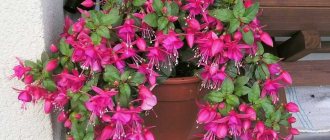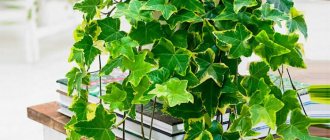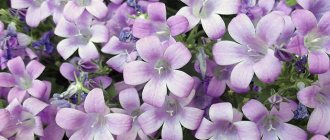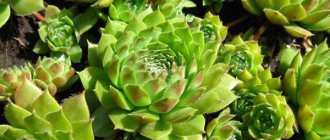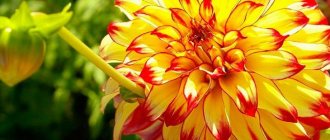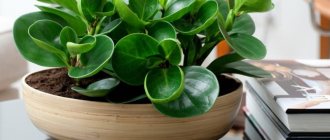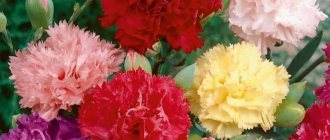Lavender is an evergreen perennial shrub. It attracts people's attention, as its elegance, richness of color and aroma cannot leave anyone indifferent.
Author of the article
Eduard Dmitriev
Florist and lover of indoor and garden plants.
Since ancient times, this plant has been used as a medicine.
Due to its unusual aroma, it is used in the production of perfumes. The French province of Provence is the leader in the cultivation of this plant: 80% of lavender is grown in picturesque French places.
Having managed to adapt lavender to overcome cold climates, this representative of the plant world has become the most recognizable decoration of gardens.
General tips and tricks for caring for lavender
- It is necessary to periodically loosen the soil near the bush.
- Timely removal of weeds.
- In dry summers, it is important to control soil drying out and increase the frequency of watering.
- For good development and abundant flowering, lavender should be planted in open sunny areas.
- Don't forget about feeding. Additional nutrients are very important for the growing season.
- In preparation for winter, pruning and covering the bush with spruce branches is necessary.
By following all the above recommendations, even an inexperienced gardener will be able to grow beautiful lavender flowers on his plot.
Use in landscape design
If you want your garden to not only please the eye, but also serve as a delight to the sense of smell, you should plant lavender next to the most fragrant plants. Sage and catnip, garden hydrangea and yarrow are recommended as “neighbors” for this fragrant shrub.
It is also good to plant these evergreen bushes next to roses and almost any plants with a contrasting yellow color. They look especially beautiful next to the yellow spherical flowers of “cotton lavender,” as the fragrant santolina is often called.
Dutch and French species are attractive not only during the flowering period. Their evergreen bushes with a silvery tint add a special charm to the garden even without flowers. Tall varieties are used in alpine slides, and the narrow-leaved variety is usually used to decorate borders. The most colorful effect can be achieved by planting lavender bushes of different colors in a checkerboard pattern.
Original hedges are often created from different varieties of this fragrant plant. The broad-leaved variety looks beautiful next to standard roses. In the UK, original lavender carpets are created in gardens by pruning them to the appropriate height as the plants grow.
Features of growing lavender in different regions of Russia
Middle zone and Moscow region
An excellent option for this area is narrow-leaved lavender: English or medicinal. These are not whimsical varieties with sufficient frost resistance. Seeds can be sown in open ground starting in mid-May, the main thing is that frost has already passed. If you plant seedlings, the optimal time is considered to be early June. It is important to note that in this region you should not sow seeds in open soil for the winter - they will simply freeze. As for care, it does not require much effort from the gardener.
Southern regions
This zone has the most comfortable conditions for the growth of most types of lavender. Due to high temperatures and plenty of sunshine in summer, it is recommended to plant the plant in areas with little shade and good air circulation. Remember - excessive watering can destroy the bush; it is important to ensure good drainage in the soil.
Northern regions
Cold, rainy autumns and harsh winters are not the best conditions for growing perennial lavender species. Accordingly, it is worth planting indoor varieties in pots, which can be taken outside during the warm season. To grow in open ground, you will definitely need winter shelter and careful care during the growing season, even for winter-hardy hybrid varieties.
Plant conditions
Temperature and humidity
Lavender is a plant that obeys the changing seasons. Unlike many of its neighbors, for example, calendula, which can grow and bear fruit throughout the year, lavender has pronounced periods of active life and dormancy. At home, the dormant period lasts 2-3 months and occurs in winter.
The optimal air and substrate temperature during the plant's dormant period is +12 – 15°C
At this time, the plant shows practically no signs of life: in some cases, it can even independently lose all its green parts, and a dozen woody shoots will simply stick out from the ground. In this case, the conditions of detention can be practically any - the plant practically does not need either light or watering in the full sense of the word.
Of course, it is not worth exposing the plant to completely “Spartan” conditions during the dormant period; the air and substrate temperature of about + 12-15 ° C will be optimal in this case. Also, once a month, it is advisable to moisten the top layer of soil with water and slightly loosen it to a depth of about 2-3 cm to ensure air flow to the roots of the plant.
Lavender in a pot
During the period of active life, lavender is a light- and heat-loving plant that requires sufficient moisture and nutrition. Therefore, the main requirement for keeping lavender is a well-lit area with direct sunlight. Daylight hours for lavender should be as long as possible; the plant cannot even tolerate partial shade. At a time when there is not enough sun yet, and the plant has already “awakened”, additional lighting should be used in the form of fluorescent lamps.
In addition, the plant does not like drafts , so it should be placed in a room where there are no strong air currents, especially low temperatures. It is necessary to ventilate the room where the lavender is located with caution, especially during the off-season.
One of the important requirements for lavender is proper regulation of the level of humidity, both in the substrate and in the air. On the one hand, excessive humidity negatively affects the life of the plant, on the other hand, too dry a substrate or air can significantly slow down its growth. There should not be stagnation of water in the pot, as this will lead to rotting and death of the root system; It is also important that a hard crust does not form on the surface of the soil, which would interfere with the normal respiration of the roots.
Use for growing in a wicker pot
Since lavender does not like excessive dryness of soil and air, it is highly undesirable to place a pot with it next to any heating devices.
Even simple heating radiators can dry out the air sufficiently that the plant begins to feel uncomfortable. If, from the beginning of spring, the air in the room where lavender is kept is excessively dry, it should be humidified somehow. For example, by placing a wet rag on the radiator or periodically spraying water in the air using a spray bottle.
Soil and container
Lavender needs loose soil; it should be slightly alkaline
You can use the appropriate purchased soil, or you can prepare it yourself.
To prepare the soil you will need the following components:
- turf soil - 3 parts
- humus or compost - 2 parts
- coarse sand - 1 part
You can use another composition, however, it should be remembered that the use of peat is undesirable, since it is problematic to make peat-containing soil slightly alkaline.
The soil should be inspected and mixed thoroughly to remove large lumps. After which it is necessary to disinfect it: wash it with a solution of potassium permanganate 0.2% or bake it in the oven at a temperature of +120°C for 10-20 minutes. After which the soil needs to sit for 2-3 weeks to restore the microflora.
Given the size of the plant's root system, the lavender pot should be large. But this does not mean that you should immediately choose a huge pot; for a young plant, for example, obtained by cuttings or dividing a bush, the initial volume of the pot is recommended to be about 2 liters. Subsequently, the plant can be transplanted by transferring it into a stationary pot with a volume of 5 to 15 liters.
Lavender bush in need of a larger pot
Drainage in the pot is required ; its height should be approximately a quarter of the height of the pot, and it is best made from expanded clay. You should also use pots with enough drainage holes to drain water.
Landing
Young plant in open ground
Material for growing lavender at home can be obtained in three ways:
- using air layering
- using cuttings
- growing from seeds
The use of one method or another depends on what is available, as well as on the time of year. Let's look at them in more detail.
Air layering
It can be used at any time of the year, but most preferably in early autumn or late spring . To implement this method of obtaining biomaterial, you will need an adult plant with sufficiently developed stems.
One of the old branches (from last year or the year before last) is taken, the top is cut off from it, the cut site is covered with earth and watered. After 3-5 days, it is necessary to fertilize this place using complex fertilizer for flowers. After 2-3 weeks, roots will appear in this place and a small sprout will form. Sometimes in the root zone of an adult plant you can find 2-3 similar sprouts that have grown independently.
Lavender shoots planted in pots
The sprout is cut off from the mother’s body, transplanted into a pot and watered.
Cuttings
The cuttings are obtained from the woody shoots of the current year. Therefore, you can only get it in mid-summer. It is advisable to use shoots that do not have flowers or buds as cuttings. If there are none, take a shoot with flowers and remove them. The cutting itself is cut at an angle of 45° at a distance of 3-4 cm from the ground level.
The roots of the cuttings are grown in a separate pot with special soil. Its composition is as follows: turf soil, leaf soil and sand in equal proportions. In addition, you will need some clean sand. It is advisable to prepare such soil in advance by disinfecting it in the manner described above.
Rooted lavender cuttings
The pot for the cutting is filled as follows: first, 2 cm of drainage or small crushed stone is poured, then a layer of 1.5-2 cm of sand, on top of which soil is poured, not reaching 1-1.5 cm to the edge of the pot. The remaining space is filled with sand.
After this, the resulting mixture is carefully watered with water and the cutting treated with the rooting agent is inserted into the pot. A plastic bag is placed on top of the pot to create greenhouse conditions.
The pot with the cutting is placed in a warm, shaded place. For a week, the cuttings are ventilated and watered daily. If everything is done correctly, after a week it will develop roots and can be transplanted into a stationary pot.
Growing from seeds
In order to ensure good germination of seeds, they must be stratified, that is, kept for the required time at low temperatures. There are several methods of stratification, differing slightly in technical details. You need to choose the most suitable one from them.
Lavender Seeds
Sand can be used for stratification. To do this, you need to take a shallow container with sand, moisten it and put the seeds on top. After which the seeds are sprinkled with dry sand (a layer of no more than 2-3 mm) and the resulting structure, wrapped in polyethylene, is placed in the refrigerator or any other place with a temperature of about +5°C. In this form, the seeds should last 1-2 months. Within a month, seed germination in the first week after stratification is more than 75%.
Other methods involve the same procedure of staying at a low temperature for 1-2 months, but instead of sand, cotton pads, rags or soil can be used. Approximately 10 days before the planned end of stratification, the seeds should be taken out of the refrigerator for one hour to room temperature.
Angustifolia Lavender Seeds
After completing the stratification process, the seeds must be washed and planted in a special substrate for seedlings (turf soil and sand, previously disinfected, are taken in equal mixtures). After which watering is carried out, and the box with seeds is covered with film. Seedlings must be germinated in a warm place with diffused sunlight. Further care for the seedlings is standard - they are watered and ventilated once a day.
Lavender seedlings
You can immediately plant the seeds after stratification in soil intended for an adult plant, however, it is recommended to sprinkle them on top with a thin layer of sand. In about 2-3 weeks the first shoots will appear.
After approximately 2/3 of the seeds have sprouted, you need to begin the procedure of hardening the seedlings. For these purposes, the film on it is opened every day an hour longer than the previous day. After 10 days of hardening, the film can be removed.
Seedlings ready for transplanting into large pots
Stronger seedlings can be transplanted into stationary pots without any problems, but it is recommended to carry out transplantation with a clod of earth to avoid damage to the roots.
Diseases and pests
Lavender is a fairly resistant plant to attacks from diseases and pests. As a rule, diseases appear due to improper or insufficient care of the plant. The most common disease of lavender is gray rot. This fungal disease appears as brown spots on the stem with a slight fluffy coating. If development is not stopped in time, the disease will spread to flowers and foliage, which will ultimately lead to the death of the plant.
To cure a flower, you need to cut and burn the affected areas of the plant. After this, you need to additionally treat the bush with a fungicide or a 1% solution of Bordeaux mixture. The cause of this disease is excessive watering and stagnation of water in the soil near the bush.
As for pests, pennies are considered the worst enemy of lavender. They eat holes in the foliage, which negatively affects the appearance of the plant. In the fight against the bug, you need to cut off already damaged leaf blades and collect insects by hand. This pest lays its eggs on the stem with a protective foam layer. They can be removed quite easily and washed off with water. Rainbow beetles can also attack the foliage, which will also have to be collected manually.
Slobbering Penny
Rainbow beetle
To ensure that lavender does not get sick and delights you with its beauty for a long time, it is important to follow the rules of caring for the plant.
Interior decoration
Having a garden is not the most important condition for enjoying this plant. A couple of bunches of lavender or a miniature pot of this plant is an excellent choice for the interior. Rich colors and intoxicating aroma are the perfect combination to enliven and add variety to your home.
A beautiful flower, Craspedia, will also fit well into your interior.
Lavender is a useful and irreplaceable plant. Use in many areas of life makes it indispensable. And its natural beauty, delicate color and unforgettable aroma make it very memorable and unique.
Beneficial properties of lavender
Lavender is not only a beautiful, but also a useful plant. It contains essential oils that contain tannins: coumarin, linalol, amyl alcohol, herniarin, zedren, citral, bisabolene, as well as butyric, valeric and capric acids. Essential lavender oil is contained in the entire aerial part, but its greater concentration is in the flowers. It has medicinal properties: diuretic, anti-cold, bactericidal, antiseptic and sedative.
Since ancient times, lavender has been widely used in folk medicine. Due to its unique medicinal qualities, it has a wide range of applications. Essential oil, as prescribed by a doctor, can be used to treat the digestive tract, genitourinary system, nervous disorders and cardiovascular diseases. Over centuries of practice, the healing properties of lavender are undeniable.
Essential oil is also widely used in cosmetology. It improves hair condition even upon first use. It is used in facial care procedures and helps fight age-related skin changes, relieve allergic reactions and rashes. Before using lavender oil in care or treatment, you should definitely consult with your doctor.
Varieties
In total, the genus Lavender has 47 species. Of these, 4 species are most widespread in cultural forms.
Lavender latifolia
Lavender latifolia
Lavender broadleaf A perennial plant native to Southwestern Europe. Its other name is French lavender. Most likely, this species was the main one, from which most of the existing varieties subsequently originated, at least in Europe and the Mediterranean.
French lavender has a developed root system; Despite the fact that it is fibrous, the roots can penetrate to a depth of several meters. The plant is quite cold-resistant and can withstand temperatures down to -20°C without shelter. With shelters, temperatures can reach -25°C.
All parts of the plant have a very strong aroma, and, unlike all its relatives, the aroma is quite harsh and lacks the “refinement” characteristic of them. The flowering time for this species comes earlier than all others; The first flower ovaries appear already in early April. The duration of flowering is the longest of all: in some specimens it continues until the end of July.
The main purpose of this type of lavender is to obtain lavender oil; It is for this purpose that it is cultivated in the south of France and northern Spain. In this form, the concentration of essential oils is maximum, so the yield percentage is very high compared to other varieties. The pungent odor of oil is usually reduced using various cleaning techniques.
At home, that is, on a windowsill in a pot, the plant takes root normally, however, somewhat worse than some of its fellows. There are two reasons for this phenomenon: an overly branched root system and increased heat-loving behavior throughout the warm season.
French lavender has several dozen varieties bred for both industrial and decorative purposes:
- Tiara - flowers are large, up to 5 cm in size, bluish-white, yellowish bracts
- Helmsdale – the shape of the flowers is similar to the classic broadleaf, the color is burgundy
- Royal Glitter – classic blue-violet lavender with medium-sized flowers
Lavender angustifolia
Lavender angustifolia
Lavender angustifolia Also called "English Lavender" because several new varieties were developed in England. The homeland of the plant is Greece and northern Italy. It is a perennial shrub plant with shoots up to 60 cm high. By the end of the first year of life, the shoots become woody at the base.
The leaves of the plant are silvery-greenish with a characteristic grayish coating; they are difficult to confuse with any others. The flowers are small, collected in inflorescences in whorls of ten pieces. There can be several whorls on the stem, so the total number of flowers is quite large and they are very visible from afar. It blooms for about two months, from July to August. The color can be different - from purple to blue or light blue.
A distinctive feature of English lavender is its very pleasant smell, due to which it is very often used in various handicrafts and folk medicine without any additional substances or procedures. The plant has good adaptability and adapts perfectly to home conditions. Tolerates frosts down to -35°C under shelters. Seed germination persists for several years.
The varietal diversity of this type of lavender is also great; There are about 30 varieties of this species, the most popular of which are:
- Alba is a bush up to 50 cm high with medium-sized white flowers, blooms in June
- Rose is a bush of medium height, about 40 cm in height, spherical, lilac-pink flowers
- Hidcoat - several varieties of different heights, characterized by compact sizes and a fairly high density of both the green part and flowers; used for low hedges and borders; color - various shades from purple to blue
Hybrid lavender
Lavender hybrid
Hybrid lavender Developed in Holland from a closely related cross of Lavender angustifolia. The characteristic scent of lavender is present, but relatively weakly expressed. The main purpose is decorative design of areas.
It is a fairly large species; some varieties can reach 2 meters in height. The inflorescences are large, quite densely collected. Flowering occurs about a month later than the English variety. At the peak of flowering, the stems bend under the weight of large flowers.
Due to obtaining the necessary external qualities, plant selection was not without some unpleasant moments. Firstly, the plant is less frost-resistant in comparison with the same English lavender, and, secondly, with insufficient amounts of mineral fertilizers, the stems of the plant look “bald” due to the small number of flowers.
Since much attention was paid to the decorative qualities of this lavender, many varieties were bred:
- Traditional Alba with white flowers
- Arabian Night - dark colors predominate in color; it can be either dark purple or dark blue
- Richard Gray - a small plant with lilac flowers
- Grosso - huge purple flowers on stems up to 1.2 m in height
Lavender serrated
Jagged Lavender
Jagged Lavender. The species was obtained in Spain or North Africa. It is thermophilic and does not tolerate frosts below -10°C. It has silvery leaves in all shades of green. The flowers are predominantly blue, large, with a faint scent.
The height of the plant rarely exceeds 1 m. The flowers are relatively large in size, their number is up to two dozen in an inflorescence on the stem. In our climate it is grown exclusively as an ornamental houseplant.
Interesting facts about lavender
- The usual color of lavender is purple, but there are varieties with pink and white flowers.
- Industrial cultivation began in the 17th century in France. Lavender was grown to make perfume.
- Perennial varieties age over time. After only 5-6 years of growth, they become naked and have an unattractive appearance. They need to be changed in a timely manner.
- Lavender is a valuable honey plant that allows beekeepers to obtain truly unique and valuable honey.
- Lavender is used to create exquisite tea blends. In Hungary, they even make ice cream from lavender.
- The largest amount of lavender is grown on an industrial scale in Bulgaria - 120 tons of essential oil, while in France only 30 tons are produced per year.
- Lavender got its name “Lava” - which means “to wash” - after the Romans in ancient times added the plant’s flowers to the bath.
Description
Blooming lavender angustifolia
The plant's name comes from the Greek word "lava", which means "to wash". This plant was used to improve the aroma of bathing water. The calming and restorative effect of lavender has been known for a very long time.
In addition, thanks to the essential oils contained in the stems, leaves and flowers of lavender, lavender was used to repel mosquitoes and other harmful insects from human homes. Until now, lavender borders are used in gardens and summer cottages to repel pests from young shoots of a wide variety of plants, planting it around the perimeter of the site.
Lavender garden path border
It is believed that growing lavender is fraught with serious difficulties, however, this is not so. If you want to grow lavender at home, you must meet a number of conditions, and there should be no problems with this crop . These conditions relate to the choice of location for the plant, proper preparation of planting material and the need to use fertilizers.
Let's look at the process of growing lavender at home in more detail.
Lilac fields of “Crimean Provence”
Colorful lavender fields are also considered a symbol of the Crimean peninsula. Narrow-leaved varieties grow here, which were planted in the 30s. 20th century. Initially, this plant was brought from the Mediterranean coast for the Nikitsky Botanical Garden, and subsequently spread widely throughout the Crimea.
Near the village of Turgenevka there is the largest lavender field. This area is called “Crimean Provence”, and they even hold their own lavender festival there.
Beautiful fields of these plants can be seen near the village with the eloquent name Lavender. In the Belogorsk region, you can admire such beautiful floral landscapes near villages with no less “telling” names - Tsvetochnoe and Aromatic.
Near the village of Olenevka near Tarkhankut there is a small but very beautiful plantation of these flowers. It is advisable to capture their bright colors in June-July, as they fade later.
Lavender fields of Provence
It is impossible to imagine the south of France without its vast lavender fields, mesmerizing in their beauty, where the eye can drown in a variety of shades - from blue-violet to lilac. Shimmering in the sun with their bright colors, for which they are also called “blue gold”, these flower meadows look truly fantastic. Beautiful snow-white houses against the backdrop of these fields create a feeling of idyll.
You can admire the colorful blooms of lavender fields in France from the end of June until the end of summer, but the best time is in July. The most attractive places are Drôme-Provençal and the Rhone Valley. In some places, lavender fields alternate with wheat or sunflower fields, which gives them a special charm against the backdrop of such contrasts. Near the ancient abbey of Notre-Dame de Senanc you can also see colorful fields of these beautiful plants.
Excursions to lavender fields are a popular attraction for tourists in French Provence. Without this floral beauty, the south of France would lose its unique charm.
Lavender fields are still found in many regions of England (they have been grown in Surrey since the 17th century), as well as in the mountains of California and the vast expanses of Oregon in the USA.
When does it bloom after planting, in what year?
You should know that when lavender is propagated by seeds, the root system will actively grow in the first year .
Flowering should be expected only after a year. When propagating by seedlings and planting plants by cuttings or layering, which it is advisable to select from young 1- or 2-year-old bushes, there are important nuances.
When the first inflorescences appear on the branches, they are removed so that the small plant can quickly adapt and accumulate strength for rapid growth. The first year is considered a growing season; during this period, rapid development of roots and green mass occurs. Flowering is possible, but it will be small.



